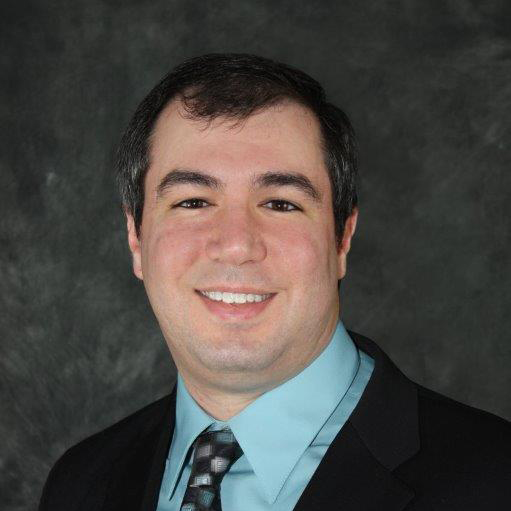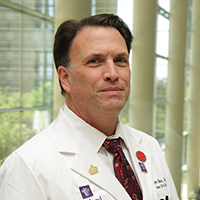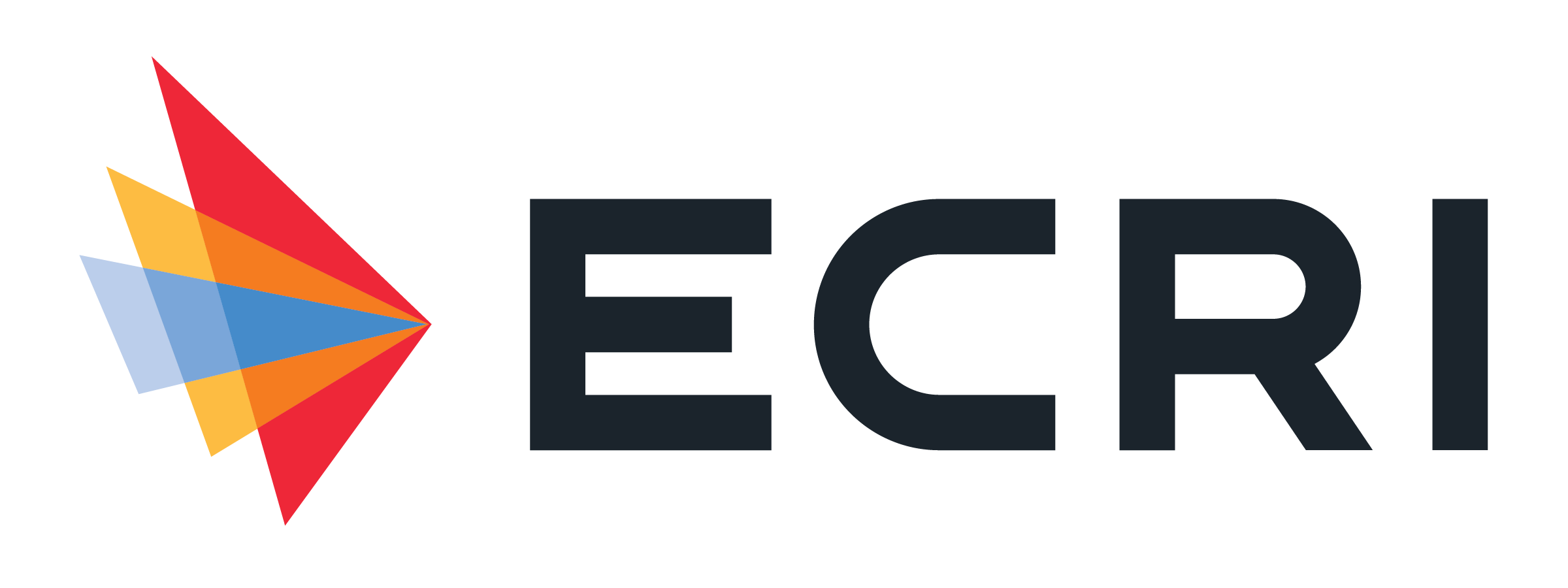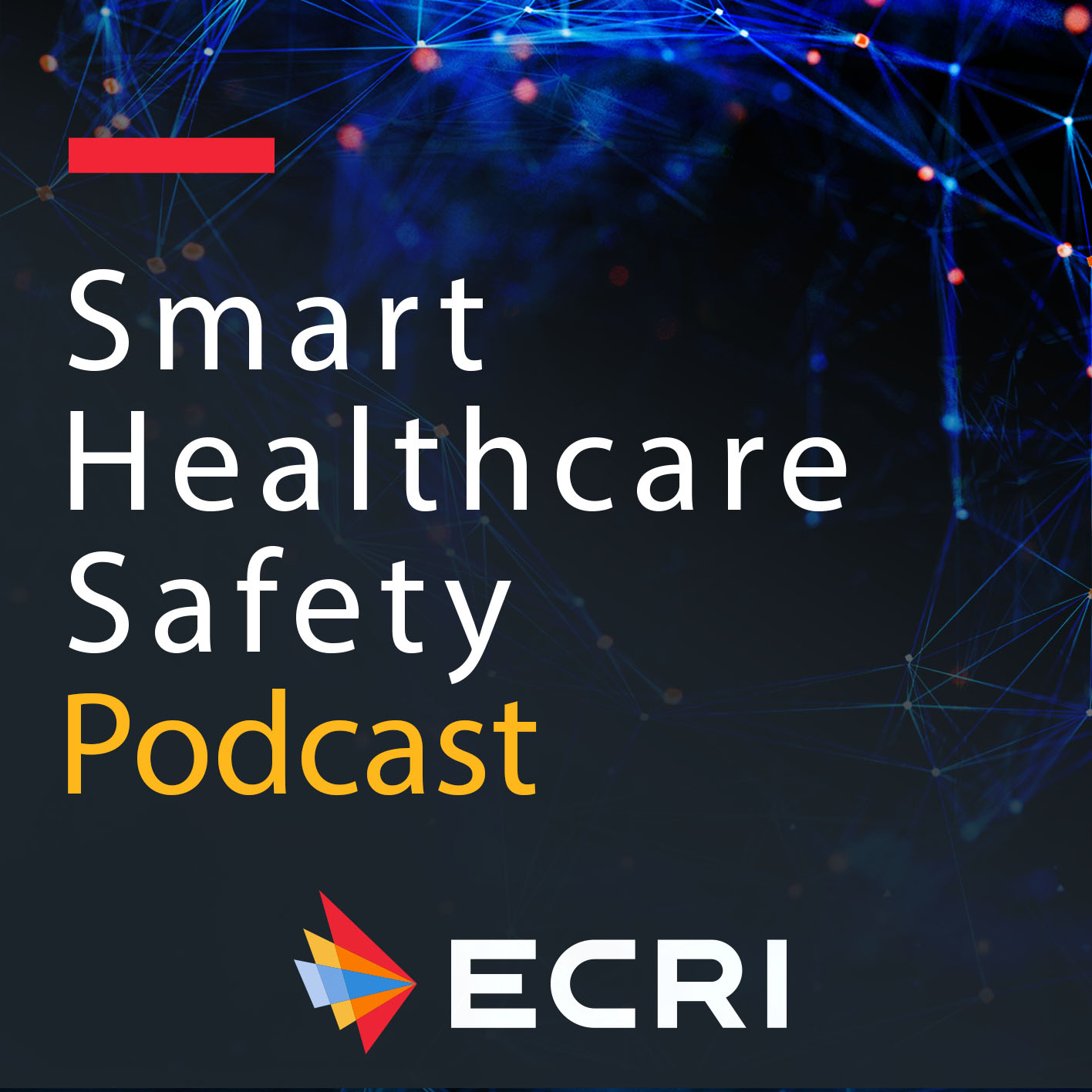消除医疗保健差距:人人享有公平和可及的医疗保健
- 0.5
- 1
- 1.25
- 1.5
- 1.75
- 2
保罗·安德森:欢迎来到ECRI的智能医疗安全,ECRI是医疗保健领域最值得信赖的声音,致力于推进有效的循证护理。我是主持人保罗·安德森,十多年来,我一直在ECRI监督我们的患者安全、风险和质量会员计划。成千上万的医疗保健领导者依靠我们作为一个独立的、值得信赖的权威机构来提高全球所有医疗保健机构的安全性、质量和成本效益。你可以在www上了解更多关于我们改善结果的独特能力。ecri。org。今天的节目是我们为ECRI和ISNP患者安全组织的深度报道录制的系列节目的一部分。今年的深入探讨重点是种族和民族在护理方面的差异问题,我们正在与PSO成员和其他人交谈,听取他们为消除这些差异所采取的举措。我们的第一位客人来自帕克兰健康和医院系统,这是全国最大和最先进的安全网医院之一。
布雷特·莫兰:大家好,我是布雷特·莫兰。我是帕克兰的高级副总裁兼首席医疗信息官。我也是副首席医疗官,我负责所有临床信息学的工作。
保罗·安德森:我们的第二位嘉宾来自帕克兰临床创新中心,这是一家领先的非营利性数据科学、人工智能和创新组织,隶属于帕克兰健康与医院系统。
史蒂夫·恼羞成怒:你好,每个人。史蒂夫·米夫,我是帕克兰临床创新中心PCCI的总裁兼首席执行官。
保罗·安德森:莫兰医生,我说过帕克兰在达拉斯地区。你能告诉我们更多关于卫生系统和你服务的社区的情况吗?
布雷特·莫兰:是的,当然。帕克兰是仅存的县安全网医院之一。我们成立于1894年。我们有880张床位,为全县的病人服务。我们有很多慈善关怀。超过33%的病人都有爱心。另外29%是医疗补助,18%是医疗保险。我们有一些有趣的事实。今天在达拉斯执业的医生中有四分之一在帕克兰接受过培训,德克萨斯州每250个婴儿中就有一个出生在帕克兰。
保罗·安德森:这确实说明了影响,对吧,这个县有那么多的医生都经历过帕克兰。
布雷特·莫兰:绝对的。
保罗·安德森:这是一个巨大的影响。是的。然后,米夫医生,你能告诉我们更多关于PCCI的信息吗?特别是,我们想要进入一些社区健康需求评估工作。
史蒂夫·恼羞成怒:绝对的。电讯盈科是一个非营利组织。它的核心也是,我们是一个数据科学和社会决定因素的健康创新中心。如前所述,隶属于帕克兰大学。我们的主要重点是将临床信息与有关某人生活的信息结合起来,并应用先进的数据科学方法来更好地了解个人,并将我们的工作重点放在先进分析中的数字健康技术创新上,以推动健康公平。我们关注的是,如何利用这些分析优化弱势群体的访问?所以它的核心是,我们试图用数据来更好地了解一个人。不仅要了解他们的临床需求,还要了解他们的生活,并尝试大规模地这样做,为一线工作人员和个人自己做好准备,这样护理就可以以一种积极主动的方式完成,以一种全方位的方式。
保罗·安德森:莫兰博士,我们将在2022年初,也就是2月底记录这个数据。我们研究这种流行病已经有两年了。你能把我们带回到2020年冬天或早春的开始吗?大流行开始时帕克兰的经历是什么?
布雷特·莫兰:是的。是的。现在回想起来很有趣,因为感觉这是很久以前的事了。我不必描述2019年12月在中国武汉发现第一例病例的时间。但事情发生的那一刻,当然到了一月份,我们就开始讨论这个问题了。到2020年2月底,帕克兰宣布了自己的官方灾难。到3月初,我们已经创建了自己的COVID指挥中心。我们直到3月中旬才发现第一例病例。从那时起,事情的节奏就非常快。我们有我们的COVID指挥中心。 We started working with Steve's team creating a dashboard for COVID and also trying to scramble to create some predictive analytics about what's going to happen with COVID. How big is the wave going to be? Can we even handle that? But we also did a lot of interesting things. We were one of the first healthcare organizations in the country to create a discreet tactical care unit for managing COVID cases within a complete negative air pressure isolation unit. We scrambled to create these Frankenstein, we called them Molly machines that were basically webcams on wheels that would plug into the LAN port. We would put them in patient rooms, and it would allow us to pan and tilt and have conversations with patients and monitor them without people having to go into the rooms. We created dozens of those for the hospital. We started having multidisciplinary, concurrent, virtual rounding in the ICUs. So the ICU team and then the nurse would have all of these specialists remote end virtual, have a Zoom meeting and sit there at the same time and do rounding virtually on a patient. That was something that they hadn't done before, and they really loved it. They've actually continued that habit since then. We stood up drive- through testing. We had massive expansion of virtual visits just like everybody else, over a 900% increase. And then we began doing a lot of collaborations with Steve and his team, as I said, with the COVID predictions, and then we started working with the county health department doing semi- automated contact tracing. We set up a solution for them, and then we started trying to figure out what are some other things we can do to try to help.
保罗·安德森:你能多告诉我一些预测分析吗?如果可以的话,不要陷得太深。你想吸收和消耗什么?然后你想用它做什么来进行评估?你是在评估个体患者的风险,还是整体的风险?目标是什么?
布雷特·莫兰:我们试图评估的是预测分析,在预测分析开始的时候,帕克兰的新冠患者人数会有多大?我们有足够的医院床位或重症监护病房床位来处理这个问题吗?不幸的是,在当时,甚至现在,在这个国家没有一个伟大的单一的信息点去说,“帮助我弄清楚我的卫生系统如何能够承受下一波,欧米克隆,三角洲。”所以我们必须自己解决这个问题,史蒂夫和他的团队帮助了我们。我们使用了最佳实践。我们采用了其他医疗系统的做法。我们做了很多,“让我们找一个长得像我们的人,他们比我们早几周,让我们看看他们在做什么。”我们就是这么做的。在我们得到这些预测之后,我们就在等待和观察,希望和祈祷它不会变得非常丑陋,希望我们是对的,或者我们高估了它。但正是在那段时间里,我们开始说,“好吧,我们还能做什么? What are some other things that we can do using some of the tools we have to help the health system?" So we started saying," Well, can we help identify patients who maybe have COVID that are maybe spreading it to others unknowingly? Maybe we can identify them ahead of time." So I reached out to Steve's team and they said," Yeah, let us help." Steve's team is really good at geo mapping and high level details at the block level of patients, and so we started talking. They had a feed of patients who had COVID in the community. At the time, this was late March, early April. There were just a handful of cases. So we said," Well, if someone has COVID and they live within a quarter mile of that person, maybe they have been exposed. Let's alert the health system. If that person has an appointment in the next two days and they're coming into the hospital or the clinic and they've been around someone else with COVID, let's create a system where we can operationalize screening them ahead of time." So Steve's team created this list. They passed it straight into our EHR, into an in- basket pool that the nurses would then work, and we would do direct outreach on the patients. Obviously, a quarter mile was kind of ridiculous, and that quickly changed to about a four- block radius. And then Steve's team did what they do really well, is they created a very sophisticated and very accurate tool for estimating prediction of being in high proximity to someone with COVID.
保罗·安德森:米夫医生,这就是我们所说的接近指数得分吗?我们说的是这个吗?
史蒂夫·恼羞成怒:正确的。保罗,从一开始,我们知道的第一件事就是距离很重要,对吧?我们也知道,为了能够有效地管理和帮助帕克兰,县,社区管理,我们需要对我们的数据采取高度本地化的方法。因此,正如莫兰博士所说,甚至在我们的社区看到重大病例之前,我们就能够扩大与县里的数据关系,以便能够每天获得检测数据的反馈,从而确切地知道哪些人检测呈阳性。通过这样做,对这些病例、这些人进行地理测绘,这样我们就能确切地知道他们在社区中的位置,我们可以让任何一个人——在这种情况下,我们从帕克兰的病人开始,正如莫兰博士所说,他们计划在接下来的两天内预约——并动态地使用这些分析来计算风险,他们自己的接近COVID风险。那些被确定为高风险的人,不仅因为他们接近阳性活跃病例,而且这些病例的密度也很高,他们将被纳入电子病历,以进行主动推广。我们的目的是,如果有人有很高的感染风险,我们就不要把他们带到他们可以传播给其他人的环境中,但我们仍然想满足他们的临床需求。因此,这些过渡到虚拟访问。所以这是一种非常实用的调整个人水平的方法同时也提供了照顾他们的最佳方法。这是利用依赖于这些算法的接近指数的开始,而不需要实际直接跟踪某人自己的运动或让他们下载另一个应用程序。因为我们真正跟踪的应用程序在市场中出现的地方,这是它真正进入其中的股权部分的地方。 A lot of the patients that Parkland was serving might not have either the technology or the smartphones to do that, or might not have the digital, technical knowledge to do that or use them effectively. So how do we help them in a way that's less intrusive and it's equitable across the board?
保罗·安德森:好吧,这指出了以这种方式使用这些应用程序的局限性,对吧?他们依靠每一个参与者来采取行动。任何时候你在那里有一个缺口,你就会在输入的数据中有一个缺口你就会有一个不那么完整的画面。是的。我想,一旦你有了这个接近指数,你就开始应用它了,这个指数的其他应用就会一目了然了。你发现情况是这样的吗?如果有,还有哪些其他用途?
布雷特·莫兰:到底,保罗。首先,我们部署了这个,PCCI会派来的护士。每隔三天,他们就会派一批新的人来,这些人在接下来的两天里有很高的接近风险,然后我们会打电话给他们,问他们两个问题。你有类似COVID的症状吗?你身边有感染COVID的人吗?在第一个项目中,我们追踪了数据,结果很有趣。当我们询问人们是否有类似COVID的症状,这些症状由PCCI确定具有高接近风险时,18%的人赞同这些症状。当我们问他们是否接近过某人,非常接近感染COVID的人时,那些被认为是高度接近风险的人,26%的人认可了阳性症状。然后,如果我们把那些被PCCI标记为高邻近风险的人,我们对他们进行了测试,24%的人对COVID呈阳性,所以四分之一。所以它实际上是一个非常精确的工具,而且非常有用。 So for the first initiative trying to protect, looking inward, people coming into the health system... We don't want them to spread it to other patients. We don't want them to spread it to other staff. It was highly effective. We screened over 230,000 patients, over 1. 2 million encounters. We found this to be a very useful tool, and it helped. It kind of decrease the spread within our health system. But then as you said, Paul, the question was, what else can we do? Steve and his team and I met, and we said," Well, let's look outward. Let's look at people who don't have an appointment in the next 30 days, but who maybe live in a high risk area, a high proximity risk." And then we said," Well, we really don't have enough nurses to call." Because that was over 400,000 people. So we said," Well, let's do two things. Number one, let's automate this. So let's not call them. Let's send them a text message with a link to a survey." So we used an automated survey tool, and they would fill that out rather than us doing that manually. And then we also said," If a person is young and healthy and has high risk for COVID, they're generally going to do very well. So the bang for the buck, there's not as much value in screening them, but let's focus on the people that have high vulnerability." So we again turned to PCCI and we said," Let's try to create a tool that can estimate vulnerability, and then let's screen these people. And let's not only screen them for risk of COVID, but if they have high risk, let's go ahead and ask them if they have medical needs, and we can offer to them so they don't need to come in. We can get them prescriptions. We can do a virtual visit. And let's also ask them if they have food insecurity." Because food insecurity was something that was really coming out as the biggest social determinant that came out in the pandemic. There were just millions of people around who were having a lot of food insecurity in the state. So we would ask them if they needed food, how many people? We partnered with a food pantry that would deliver them groceries for 14 days, which was enough time to let them clear if they had COVID so they didn't need to go out and get any food. That was kind of the second part of this proximity initiative. But again, it was key on Steve and his team developing this vulnerability risk score.
保罗·安德森:你说过让护士亲自拿起电话给你正在检查的每一个人打电话是不切实际的,因为有成千上万的人。但是,像你说的那样,推动外展的行为,然后再加上你可能提供的其他一些服务,这是一种与对抗不公平的医疗机会联系在一起的方式吗?真正接触到那些可能因为某种原因无法接触到医疗系统的人吗?
布雷特·莫兰:是的。这么说有点傻,但是人们不喜欢和别人说话。人们喜欢发短信。所以如果我们能有一个使用短信的解决方案,他们可以用他们的手机,他们可以点击一个链接,填写调查。我们对此有很好的回应,我们有很高比例的人支持粮食不安全。所以它确实有效,也许不如直接打电话给别人那么有效。不过,人们通常不会接电话。但当我们需要大规模地进行这类事情时,它会有所帮助。
史蒂夫·恼羞成怒:保罗,我想补充的是,要解决不平等问题,这是一个多方面的努力,它绝对是从你使用的数据类型和分析类型开始的,以确保你真正看到了整个人,整个社区,而不是人为地引入下游会产生影响的东西。所以在这种情况下,通过脆弱性分析和指数,我们采用了多个指标和多个数据,并将它们结合在一起,能够再次全面地观察一个人。我们从一开始就知道年龄是一个风险因素。我们知道,有一些特定的医学合并症与COVID的高风险相关。当然,这些都很重要。但在此之后,我们也从我们多年来在这个社区所做的工作中直观地知道,种族背景、种族因素以及有关某人生活的信息,我们称之为健康的社会决定因素的东西可能是导致COVID风险的关键因素。因此,我们将这些因素归类,并将它们视为短期内不会迅速变化但至关重要的因素,然后将它们与另外两个因素配对,其中一个与流动性有关。我们知道,搬家的人越多,不管是出于需要还是出于选择,这将使他们和周围的人更容易受到伤害。从第一波疫情中我们也知道邻近程度很重要,所以活跃病例的密度。我们把这些组件放在一起,建立了这个算法来识别漏洞,既可以在个人层面上,也可以在整个地理位置上。 So the activities and the urgency of those activities were prioritized based on where were the folks that were most vulnerable and also where you had the highest density of cases across the community. So whether it's the mobile testing sites or new testing sites that are being stood up, they're done in a way that folks across the community can access them conveniently on their own term. That's where I believe that starting with information that takes into account those key elements is so critical, because then any action that you start to take downstream, if you don't do it right the front end, it's already being biased.
保罗·安德森:嗯,如果我没理解错的话,你提到了一些你能够帮助协调的社区活动。但是,一旦疫苗开始可用,这是否会延伸到,例如,建议县建立疫苗接种地点,对吗?因为有这样一种说法,“我们必须让所有人都参与进来,但我们不可能在第一天就做到所有人。我们该如何分配?”这也有贡献吗?
史蒂夫·恼羞成怒:保罗,你说得很对。这很有趣,对吧?随着这一流行病的每一次新浪潮,都产生了新的挑战。当疫苗于2020年12月首次上市,然后在1月更广泛地上市时,这是一个关键组成部分,因为我们最初对疫苗的需求大于供应。所以一个关键的分析练习,接下来的所有活动是,“好吧,那我们如何划分优先级?谁应该先接种疫苗?”我认为,达拉斯发生的另一件伟大的事情是帕克兰,其他医疗服务提供者,县和城市之间的协调,建立了一个中央登记名单。每个人都在同一份名单上工作,再一次,将它与我们讨论过的数据配对,然后继续与疫苗接种数据配对,这样我们就知道每天都有谁接种了疫苗。我们需要把这些成千上万的人的名单,以最公平的方式优先考虑,我们首先帮助那些最需要帮助的人。这就是我们历史上对脆弱性和接近性使用的两种分析方法结合在一起的地方,使我们能够根据我们刚刚谈到的这些因素,每天对这些列表进行优先排序,并开始发送注册信息并按顺序排列列表。 So then, somebody who could get to the internet first or somebody who could register 20 times did not get prioritized versus somebody that was much more vulnerable from both their ethnic, racial, their socioeconomic, their medical conditions, et cetera. That's something that at the beginning we used and in a very effective way to prioritize and get those vaccines to individuals.
布雷特·莫兰:是的。保罗,正如史蒂夫所说,我们是有意为之。我们知道这是迟早的事。疾控中心在第一波疫情时就说过了。对疫苗的需求会远远超过疫苗的数量,所以我们想要做到疫苗分配的公平。虽然每个人都必须遵循1b列表,我们也都这么做了,但我们根据脆弱性对1b列表进行了优先排序,这些是第一批人。在帕克兰,我们给他们发了一张预约票,只有有票的人才能预约。我们从最脆弱的开始,然后慢慢往下看。这10万人最终都收到了罚单,但优先考虑的是那些最脆弱的人,也恰好是那些社会经济差距最大的人。所以这是故意的,我们会打电话给他们。 We would send them text messages and emails. We let them schedule online. We had call centers calling them. And the results held true. At Parkland, of our vaccines we distributed, 49% went to Hispanic, 23% went to Black, 18% to white. And when you compare that with the Dallas County race ethnicity makeup, it's very favorable. 40% of Dallas is Hispanic. We've vaccinated 49%. 23% is Black, we vaccinated 23%. So it was very useful. Looking at social determinants, over 50% of patients who received vaccines lived within the highest socioeconomically inequitable zip codes, and so it was very fortuitous. We were very lucky and we were very happy with the results that it ended up being an equitable distribution.
保罗·安德森:当你将这与米夫博士之前描述的人们无法获得智能手机的情况进行比较时,你会想到全国各地的经历。你会听说人们一直等到午夜,因为那时药房的名单才会更新,他们可以尝试第一时间预约,或者代表他们的祖父母这样做。这似乎不仅是一种更好的确保公平的方式,而且也是一种更好的确保……我该怎么说呢?这个过程有一定的合理性。
布雷特·莫兰:是的。不。同意了。
史蒂夫·恼羞成怒:保罗,我也给你举一个例子,因为我认为我们经常从一些事情中吸取教训,当我们回首往事时,会说:“天哪,我们本可以做得更好的。”通过每天使用数据并更新数据,你实际上有机会快速学习和调整。莫兰博士谈到了1b和事情的组成部分,我想说的是,来自联邦政府和州政府的预先过滤,指导你如何优先考虑。伟德体育平台当你仔细观察时,你会发现第一组是很好的理论基础。让我们优先考虑年龄较大的人,75岁以上的人作为第一类,然后选择这个群体,使用我们说过的方法。但我们很快意识到,应用前置过滤器,你会自动引入一个等式组件。我们知道帕克兰服务的邮政编码,你移动几英里,预期寿命下降15年。有些社区的平均预期寿命是63岁。在某些情况下,这些人也是最需要它的人,但是通过善意的应用,一个过滤器,让我们关注那些超过75岁的人,你可以自动引入一些不利的东西。因此,通过跟踪数据,每天查看这些数据,你可以很快地进行调整。 But again, I think it makes the point. You need to think from the first step all the way through, and make sure that every step along the way you don't unintentionally introduce something that could create an inequity in the way you approach.
保罗·安德森:我总是喜欢在结束这些谈话时,问听众们今天可以做些什么来促进公平和安全。认识到他们不可能一次完成所有的事情,他们需要一个起点。我特别喜欢的一件事是,我认为我们可以从你的经验中学到的是,虽然你确实有一个收集这些数据的基础设施,但我想,在我们所有人都想到大流行之前,你并没有专门寻找这些数据。所以在某些情况下,你真的是在起步。莫兰医生,也许我该从你开始。如果另一个组织正在寻求发展或评估他们的社区公平项目,以及他们如何以这种方式与社区互动,那么什么是一个好的起点?
布雷特·莫兰:保罗,我建议你先从小事做起。我认为我犯的一个错误,我认为很多人犯的一个错误是,你试图吞下整头大象。我会选择一个,不超过三个你想要关注的领域,然后根据真实的数据,种族,民族和语言进行公平的旋转。对我来说,我经常发现最好的方法就是让数据可用。不要用它来衡量,不要用它来惩罚。只是为了让它可用。当人们看到它时,他们开始改变做法。我们今天描述的很多东西,我们都有数据点。我们会显示接近指数。我们把它放在电子病历里,这是一个标准的电子病历,很多人都在用,我们把它放在日程表里,所以当病人出现的时候你会看到它。 We put it in our alerts. We put it in our all of our standard system lists, our patient lists. We made it easy to find this information so that it could be applied into the everyday, because that's what you want them to do, is to embed it into their everyday practice. So take a few small metrics and then embed them, and hopefully the needle will start to move.
保罗·安德森:米夫医生,你有什么想法吗?
史蒂夫·恼羞成怒:是的。保罗,对我来说有两件事很关键。第一,充分利用你拥有的数据。我们并没有缺少数据。只是我们缺乏对数据的实际应用。我们所看到的是,人们可以从今天开始他们的旅程,从你的电子病历中获取他们已经拥有的关于你的病人的信息,并用你已经拥有的关于他们住在哪里的信息来丰富它。这是一个相当直接的过程,为你的病人绘制地理地图,这样你就知道他们住在哪里,然后将这些因素归因于很多情况下公开可用的数据,这样你就能更好地了解他们所处的环境。这为你提供了更多的视角,让你了解他们进入你的医疗系统所面临的障碍,无论是物理访问还是数字访问,因为新的组织开始涉足这一领域。你可以主动解决这些问题。因为没有他们,我们可能会创造不公平的接入点,或者不是每个人都能以一种方便或可接近的方式进入。 That's one. We have the information. It's just a matter of bringing it together. And the second one, Dr. Moran also alluded to. Make it visible and accessible within where people already do their work. Don't expect them to hear something great and then expect them to go somewhere else to find it. If you're not teeing it up exactly where they're already doing the work in a way that's easily digestible, it's not going to have its biggest impact. So small steps, but towards this goal of knowing your patients better, and understanding them better leads rapidly to such great improvements anywhere from strategy, from access, as well as to the frontline point of care interventions.
保罗·安德森:好吧。在我们结束之前,你们有什么想补充的吗?
布雷特·莫兰:我想,保罗,史蒂夫暗示了下一个。我想有些人可能会说,“那么,你接下来要做什么?”对于帕克兰来说,从使用COVID预测开始,做一些建模行为和事情,让我们说,“我们该怎么处理大数据?我们能否利用大数据来帮助我们更好地了解谁是我们的病人?”正如史蒂夫提到的,我们想知道他们是谁,病人吗?我们的病人最重要的是什么?我们知道他们的医疗问题我们知道其中的一些。我们开始触及健康的社会决定因素的表面,但我们真的没有进入更大的……在电子病历系统之外还有很多关于病人的环境和社会数据我们不知道,但它确实存在,而且是现成的信息。 Now that we all have complex health systems and big computer systems and data analysis, you can actually create an amalgam of that data to get you a better 3D picture of the patient and who they are. Those are some things we're working with Steve and his team on. We call it the Know Thy Patient Initiative, and it's telling us more about who they are. Because again, with healthcare, the outcomes, 80% of it is not related to the care they receive. It's related to the environment and the genetics and the habits, and we need to know more about that to reflect their care and provide equitable and good care for them.
保罗·安德森:莫兰医生,米夫医生,非常感谢你们的到来。您可以从股权网站www了解更多关于ECRI和ISNP PSO的信息。在Ecri.org网站上,你可以在这个播客系列中找到更多关于医疗中种族和民族差异的对话。你可以在pcinnovation网站上找到更多关于帕克兰临床创新中心的信息。org和帕克兰医院的帕克兰医疗中心。com。请务必在Spotify、iTunes、b谷歌Play或任何您获得播客的地方订阅我们的最新剧集。我们欢迎您的反馈。请访问我们的ecri。或发邮件至ecri- podcast @ ecri。 org.
描述
本集是关于ECRI和ISMP患者安全组织(PSO)年度深度潜水报告系列的一部分。
《2021年深度潜水》报告重点关注医疗保健领域的种族和民族差异问题。研究一再证实,种族和族裔少数群体的成员更有可能在护理方面存在差异,包括没有保险或保险不足的风险增加,缺乏获得护理的机会,以及可治疗和可预防疾病的健康结果更差。
在本集节目中,我们的嘉宾将讨论他们以数据为导向的方法,以识别和消除差距,并实现他们创建一个人人享有公平、可获得医疗保健的达拉斯县的愿景。我们的第一位嘉宾,Brett Moran医学博士,来自帕克兰健康与医院系统,这是全国最大和最先进的安全网医院之一。我们的第二位嘉宾,史蒂夫·米夫博士,来自帕克兰临床创新中心,这是一个领先的,非营利的,数据科学,人工智能和创新组织,隶属于帕克兰健康与医院系统。
访问ECRI和ISMP PSO了解更多信息或要求演示。下载ECRI的行政简报和ISMP PSO的《深入研究:健康和医疗保健中的种族和民族差异》。
今天的主持人

保罗•安德森
今天的客人
史蒂夫·米夫,博士,硕士


